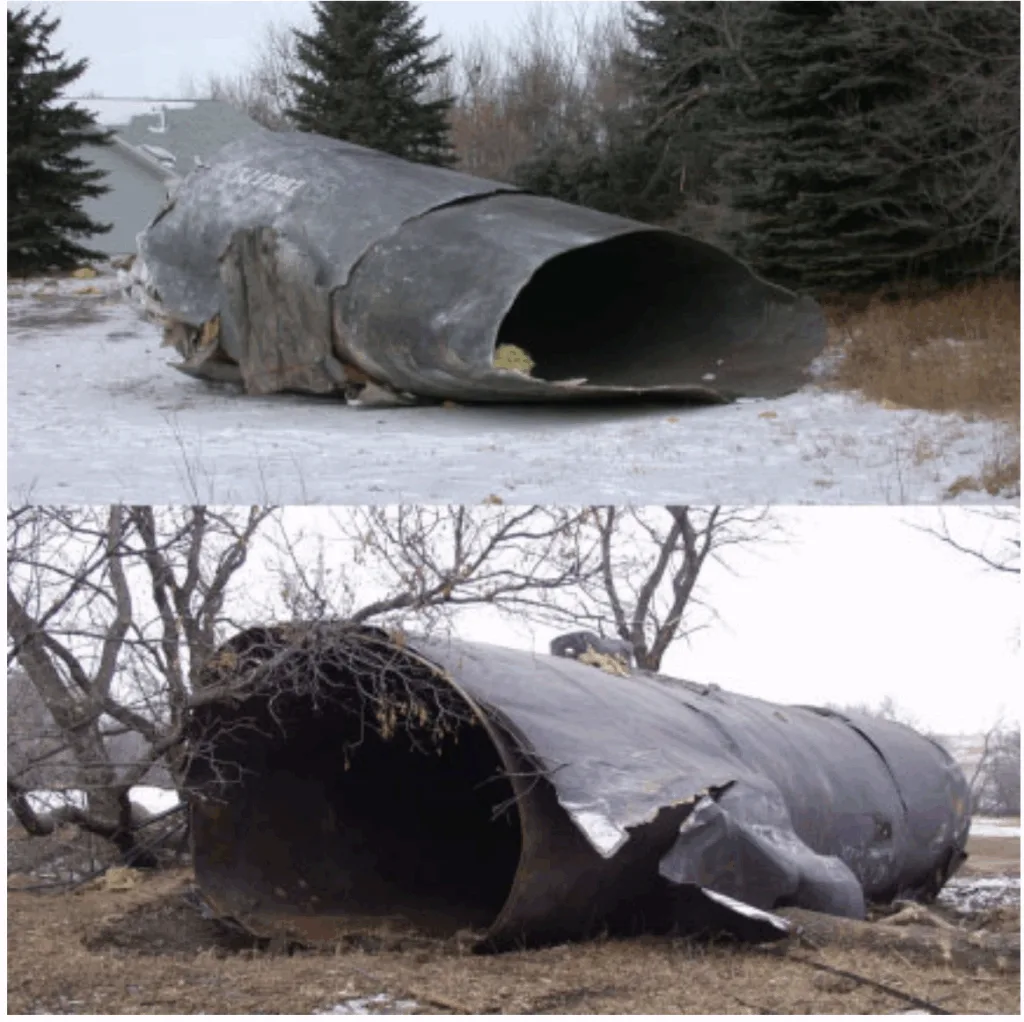

Following up from the last piece on this, we left off immediately following the ammonia disaster in January 2002. In the days and weeks following Minot residents searched for answers, and when the National Transportation Safety Board (NTSB) released its findings, those answers proved to be disappointing. Today, we will dive into why the derailment occurred and the cleanup following.
The derailment was ultimately caused by a broken joint bar, a critical piece of metal used to connect sections of continuous welded rail. The specific joint bar that failed had developed fatigue cracks over time, likely due to a combination of stress, temperature extremes, and repetitive wheel loads. These cracks went unnoticed by Canadian Pacific Railway’s inspection crews, and on January 18, 2002, they finally gave way, sending a total of 31 cars off the tracks.

The NTSB investigation revealed that Canadian Pacific’s inspection practices were woefully inadequate. Despite operating in a region with severe winter conditions and known rail stress, the company relied effectively solely on visual inspections conducted from slowly moving vehicles. Crews did not get out to physically examine joints or use more advanced tools available to them that could have detected the internal cracks. In fact, the last detailed inspection before the derailment failed to note any issues, despite clear signs of wear that were visible in post-accident photographs that was deemed to almost certainly be there pre-crash.

The bar had been installed in a curve, a location more prone to stress and failure, and it had a history of maintenance requirements. The NTSB concluded that both the location and condition of the joint should have prompted closer inspection or replacement. But under the existing procedures, it remained in service until it failed...catastrophically.

Compounding the mechanical failure was the fact that five of the derailed tank cars ruptured on impact. These particular tankers were built with non-normalized steel, a type of metal known to become brittle in subfreezing temperatures. At -6°F that night, the steel fractured easily under the stress of crashing off the tracks, and released a combined 147,000 gallons of toxic anhydrous ammonia into the air.
Had the cars been built to newer post-1989 standards using normalized steel, the extent of the chemical release might have been dramatically reduced. The NTSB cited both the tank car design and the failure to phase out older models as major contributing factors to the scale of the disaster.
Canadian Pacific Railway quickly faced a wave of litigation. Hundreds of residents filed suit over injuries, trauma, property damage, and long-term health complications. A class-action lawsuit resulted in settlements for many, while individual plaintiffs secured additional compensation through civil trials.
Beyond legal payouts, cleanup and environmental remediation topped $8 million. Contaminated soil, equipment, and rail materials had to be removed and disposed of under federal oversight. Affected areas were monitored for months, and emergency response planning across North Dakota was reevaluated in response to what happened.
In the wake of the incident, the NTSB issued multiple safety recommendations. Chief among them was a call for the Federal Railroad Administration to implement stricter standards for rail joint inspection, particularly in curved segments. Recommendations included requiring ground-level visual checks, ultrasonic testing for hidden cracks, and better documentation of joint bar condition.

The incident also renewed calls for tougher standards on tank car design and the accelerated phaseout of older, more fragile models. While improvements have been made over the past two decades, events like the 2013 Lac-Mégantic disaster in Canada and the 2023 East Palestine derailment in Ohio have shown that many of the same risks can still persist today.
In Minot, the visible damage was cleaned up long ago. The tracks were repaired, the fog lifted, and the headlines faded. What began as a screech in the night quickly became one of the worst chemical emergencies in North Dakota's history. And while first responders showed bravery under near impossible conditions, they were hamstrung by a warning and communication system that failed when it mattered most.
The days that followed shifted the conversation from emergency response to accountability. Investigators traced the disaster to a cracked joint bar, a failure so basic it should have been caught. But it wasn’t just metal that gave way that night. It was a brittle inspection process, a complacent regulatory culture, and a public alert system unequipped for a real emergency.
Yes, inspections have improved. Yes, emergency protocols have been revisited. But two decades later, the memory of that night still lingers, and with every new derailment in the headlines, the same question echoes: if it happened again, would we catch it in time? Or would history, as the saying goes, not repeat itself, but rhyme?